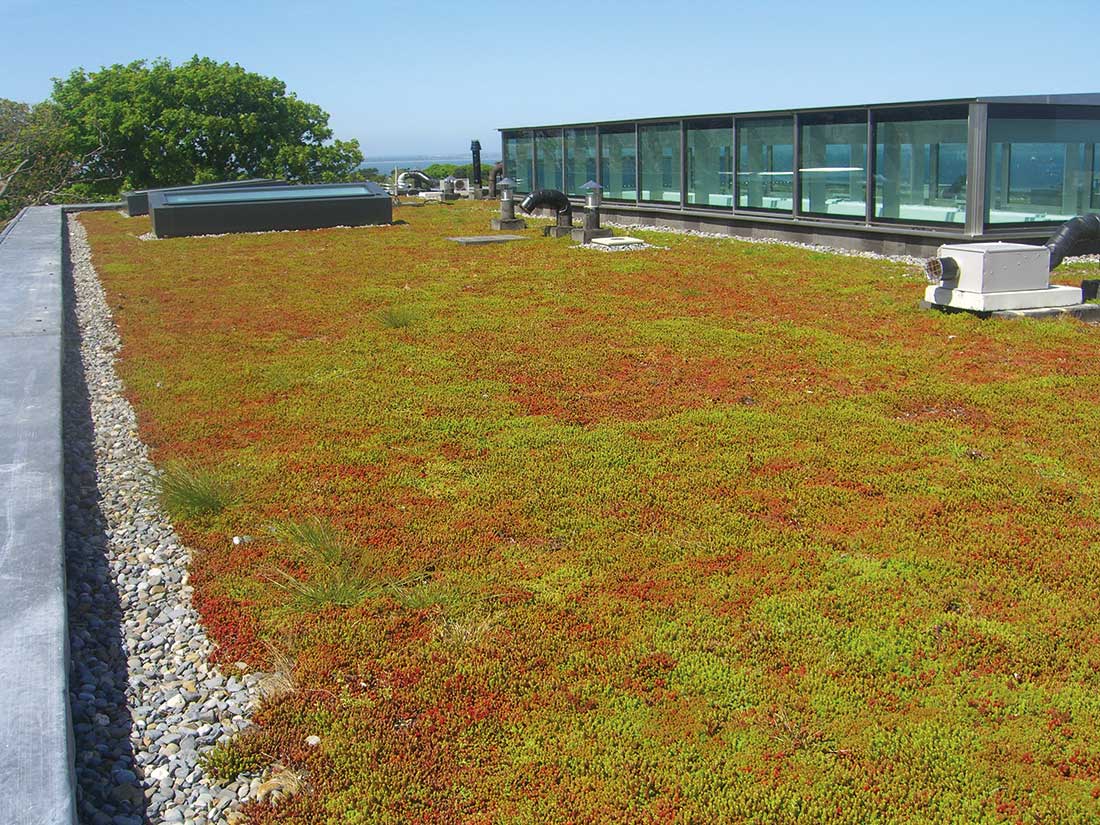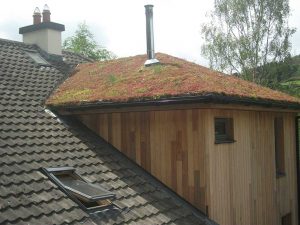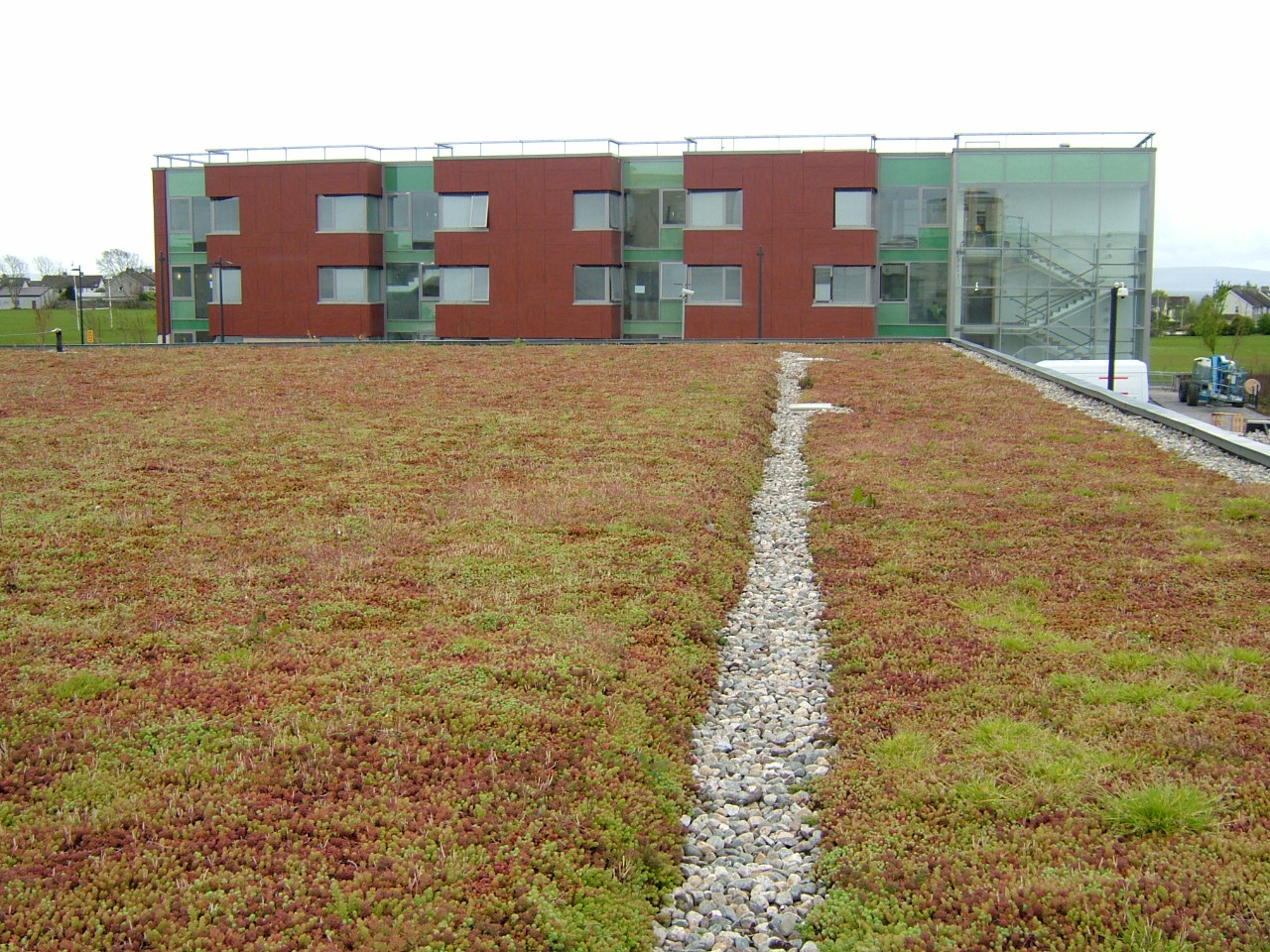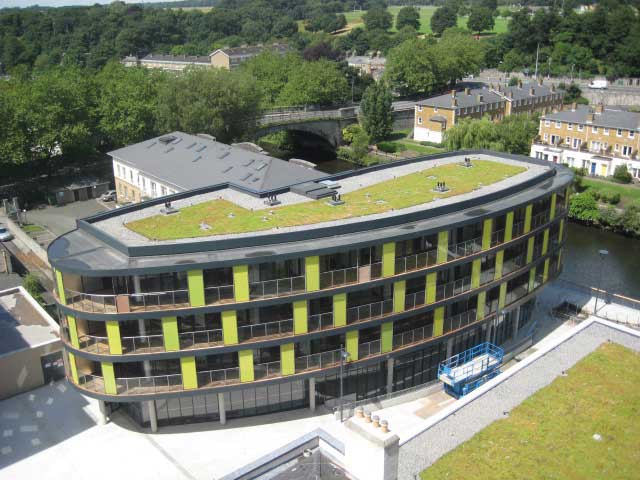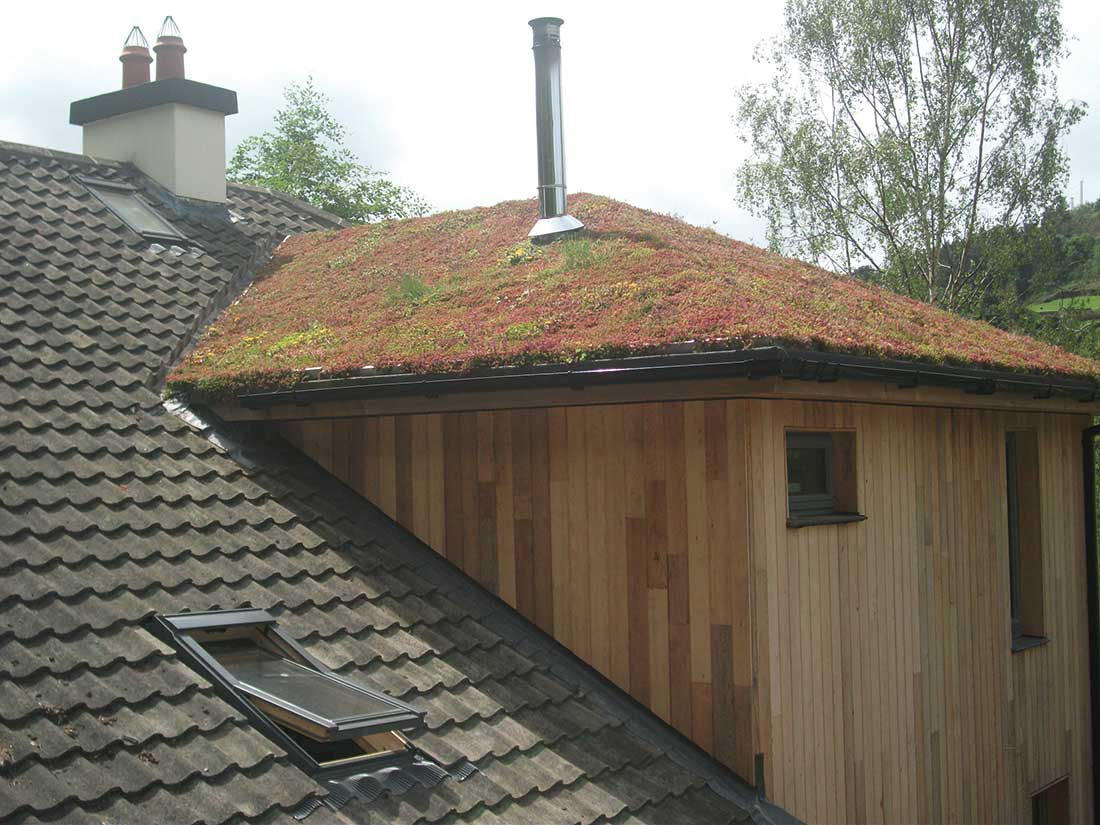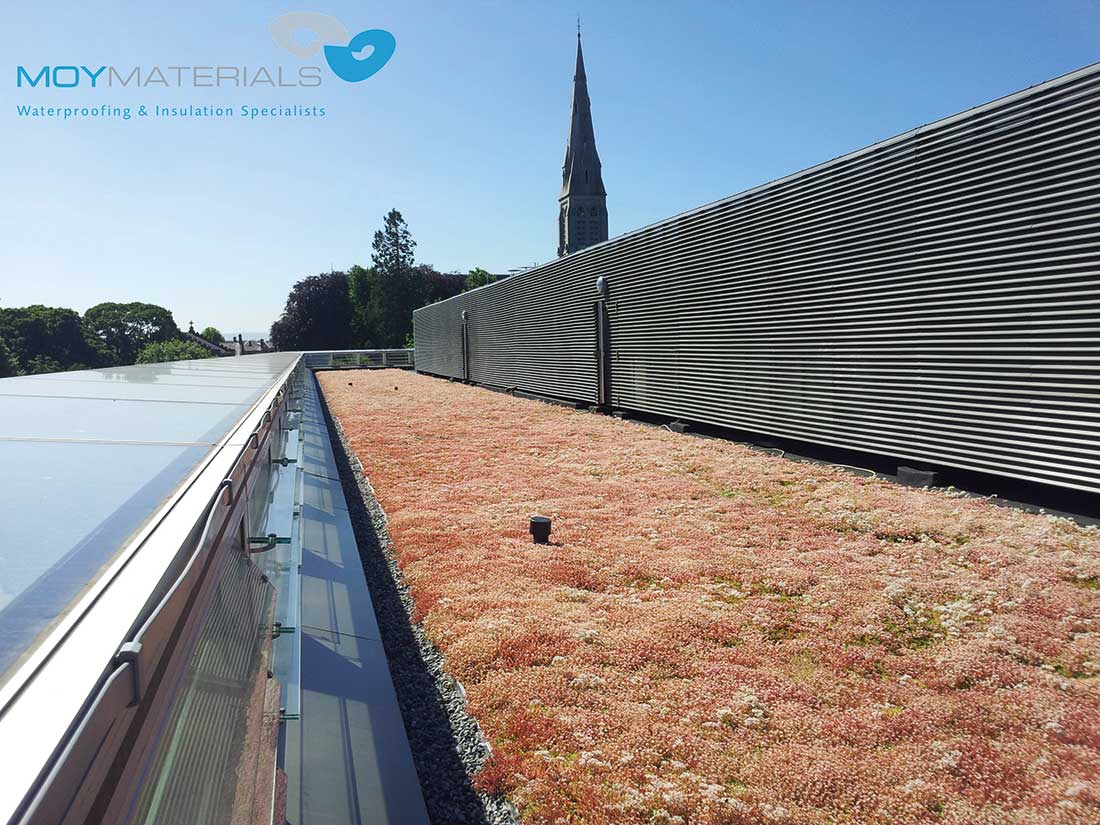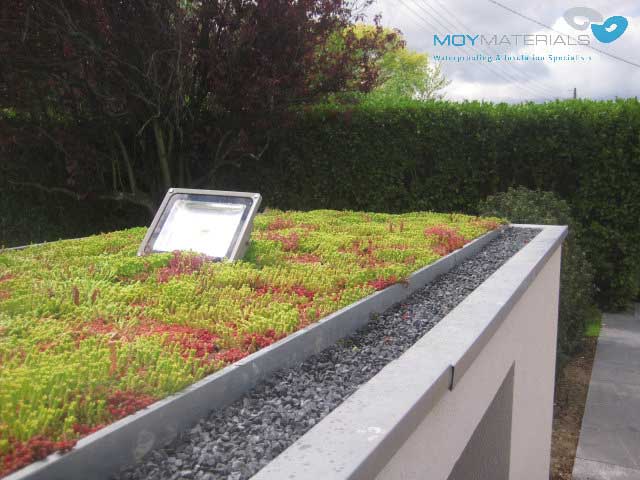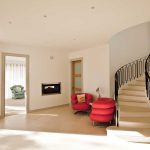An overview of how to add some life to your building’s roof covering.
There are two types of green roofs: Intensive roofs can include lawns, flowerbeds, shrubs and even trees; landscape variations are practically limitless for both design and use as it is possible to create an environment at roof level similar to that of any garden. The plants used require maintenance, irrigation and management throughout the year to ensure the upkeep of the landscape and allow the vegetation to flourish.
An extensive roof, meanwhile, is a lighter weight option with self-sufficient grasses or succulents. Some systems use low maintenance sedum planting (a type of succulent plant) to provide excellent cover and increased protection of the waterproofing system. The plants are grown on a ‘blanket’ that is harvested like turf and installed by rolling out on top of the waterproofing and any other landscaping layers. The blankets are very lightweight, easy to maintain and provide instant greening to the roof.
The single biggest driver in urban settings is rainwater attenuation, in rural settings the aesthetic is the key reason to install a green roof. Note that extensive green roof systems are not intended for general access or leisure and are primarily there for ecological benefit or aesthetic appearance.
Support system
Due to the need for water tightness, airflow underneath the green roof system must be carefully designed as timber support beams and trusses need regular airflow to avoid dry rot setting in. The correct procedure is contained in the Building Regulations for both normal and green roofs, and current practice is for your builder to build this structure for you. Constructing your roof to be of warm construction is the most convenient way to tackle the condensation risk.
From the waterproofing layer on you’ll need a specialist company; in fact many green roof systems are offered by companies specialising in the supply of flat roof membranes as water tightness is an equally important requirement for these. Joins in membrane materials and provision of seals around protrusions such as chimney and ventilation ducts are critical.
‘Note that extensive green roof systems are not intended for general access or leisure and are primarily there for ecological benefit or aesthethic appearance.’
Both green roof types will be heavier than a regular roof, in large part to due the roof retaining water, but there is a big difference in structural demand between these two systems. Whilst it is possible to construct a timber roof for small spans and lighter roof coverings, for an intensive roof you may require a concrete deck base with waterproofing in the form of root resistant modified bitumen, insulation, drainage and reservoir board, geotextile fabric and finally soil with a mixture of sedum species, grasses and wild flowers.
The insulation on top of the concrete deck in a warm-roof construction gives a U-value practically at Passivhaus standards and the combination of materials that are layered drain well and
provide a medium for the grass to thrive in. Extensive roofs can be built on top of appropriately sized timber rafters with OSB3 sheets above, which are an ideal substrate for the waterproofing and for use externally in structural roofing.
Maintenance
For intensive roofs the growing plants need to be fed and access may be awkward, but be careful with fertilisers as these may contaminate the storm water system. More frequent inspection
and cleaning of guttering and downpipe systems is paramount to avoid debris from the roof becoming lodged in the drainage system. Most suppliers will provide advice and assistance in the ongoing maintenance. Sedum roofs often surprise homeowners when the lush green colour turns red for winter. Another aspect to consider is that different varieties are planted to ensure that the species with the best fit for your specific roof’s solar exposure, shade, wind, takes over. This may lead to some bald spots in the first year.
Cost
A green roof tends to be more expensive than those for slates and tiles, working out at around £5 or between €4 to €8 per sqft excluding VAT for the extensive kind. Intensive roofs tend to be much more expensive because they’re more complex to build, and heavier. They may also have significant additional costs associated with providing safe access and fall protection.
Penetrations
With any type of living roof great care is needed with the waterproofing, making absolutely certain that any penetrations are correctly sealed. These should therefore be kept to a minimum; for instance ventilation ducts can be directed to the side of the building.






